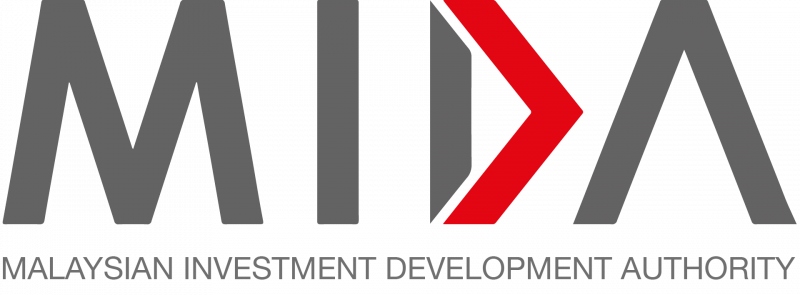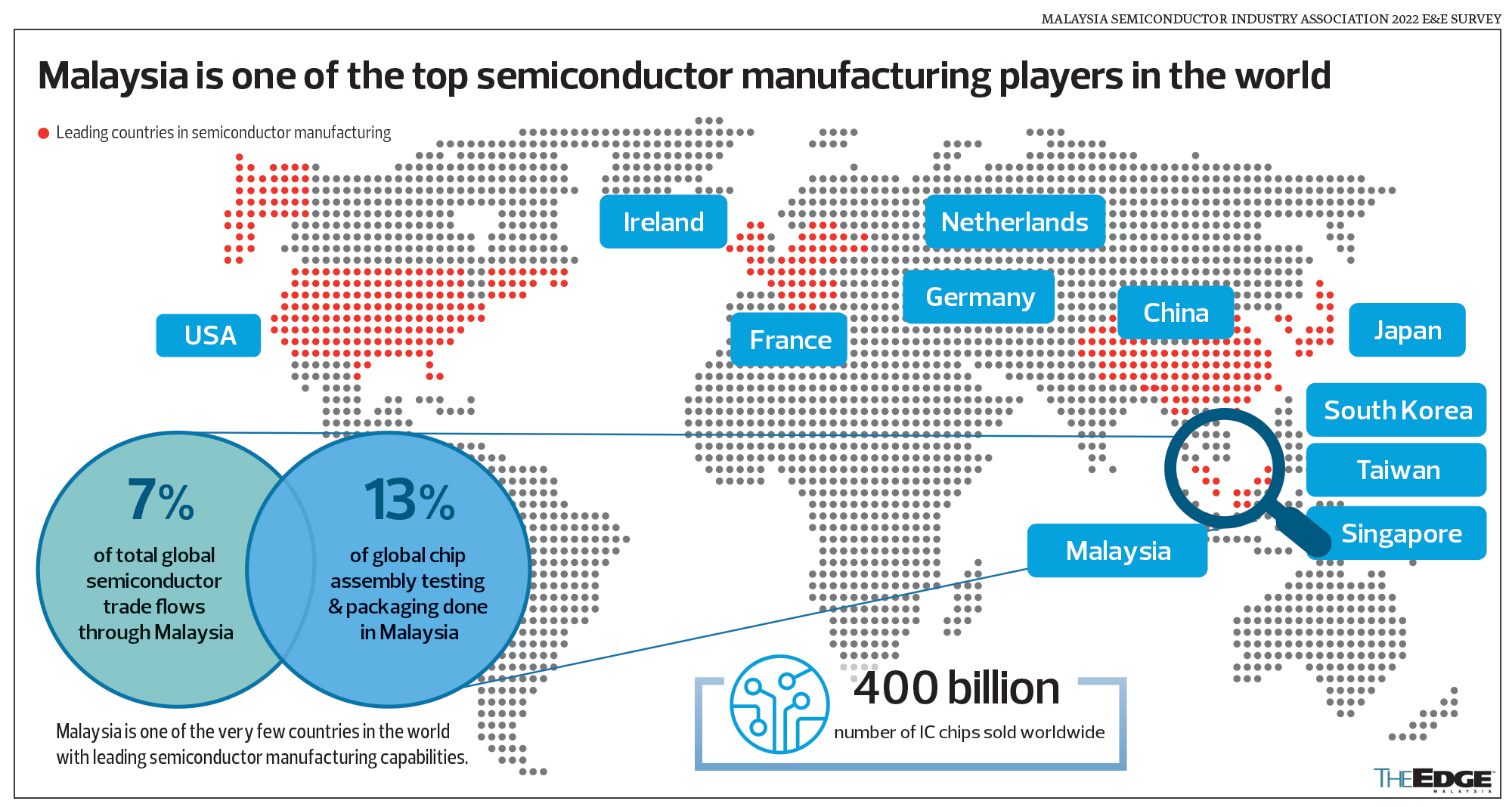Tech: Semiconductor veteran turned VC raising US$200 mil to back IPO-able chip firms
06 Mar 2024
EVIDENTLY, age is just a number for semiconductor veteran turned venture capitalist Datuk Lai Pin Yong. BlueChip VC Sdn Bhd, which he co-founded, is raising US$200 million (RM956 million) to back Penang-based semiconductor companies in three promising segments — advanced packaging, integrated circuit (IC) design and niche equipment — and eventually have them listed on Bursa Malaysia.
With an initial capital of RM120 million, BlueChip VC set up shop as a specialised technology fund just a year ago, in early 2023, in George Town, Penang. It is now gunning for an annual return of more than 20% from its investments in promising investee companies seeing a spurt in growth as global supply chains are recalibrated with “friendshoring” or “China plus one” in mind amid heightened US-China trade tensions.
“The RM120 million starter fund has been fully committed to leading local electronics companies. Their names will be announced upon completion of formalities,” Lai tells The Edge in an interview.
“We are now planning to launch the US$200 million fund in view of the overwhelming response and strong requests to participate. We have met up with and received endorsement or interest from not just Malaysian sovereign wealth funds, but also regional ones. Some of these funds will be partners in our new fund as well as co-investors in our identified investee companies.”
An electrical engineering graduate of the National Taiwan University with five decades of experience in the semiconductor industry, Lai, who turns 80 in April, was among the pioneer batch of Malaysian engineers when Intel Corp set up shop in Penang in 1972 — the US chip behemoth’s first overseas manufacturing facility. There, he worked his way up to general manager, vice-president and eventually managing director of Asia-Pacific between 1983 and early 1994. In late 1994, he moved to Motorola Inc, where he was corporate vice-president and president of Motorola (China) Electronics Ltd, before being promoted to senior vice-president of Motorola Inc.
Lai says he has had a role in fostering the creation of champions in the local chip sector.
“At Intel, I initiated a then new policy to foster a local supply chain by localising the design of assembly, testing and packaging machines, and as a result building up the capability of local engineering firms.
“This was followed by encouraging promising young engineers, who had the [expertise] to set up their own companies, with contracts [from large foreign tech multinational corporations that had begun to outsource smaller jobs]. Eventually, it created many new semiconductor-related companies, of which at least eight have been listed [or are seeking to list] on Bursa Malaysia,” he elaborates without naming the eight companies.
Lai also says he fostered the deepening of the supply chain when he ran Motorola in Greater China. “I asked the suppliers of Motorola to set up operations in China. Otherwise, the contracts would not be given to them. Consequently, about 100 downstream foreign suppliers went to China.”
The experience and network helped to draw industrial leaders from China and Malaysia to be limited partners (LPs) at BlueChip VC, says Lai. Both he and BlueChip VC CEO Tim Chen Yongzheng are among the 12 LPs of the fund. Chen previously headed Motorola, Microsoft and Hon Hai Technology Group’s (Foxconn) operations in China.
“We will be able to induce the Chinese semiconductor firms to set up operations in Malaysia, which can serve as their second home to export, especially to the US. So far, the response from my China network in Suzhou, Tianjin, Wuxi and Shenzhen to invest in Malaysia has been overwhelming,” says Lai.
BlueChip VC and its partners can also be co-investors, which could then introduce new businesses to the local semiconductor firms, he adds, noting that US sanctions restrict the supply of semiconductors, associated intellectual property and equipment to China’s manufacturers — not just from the US, but also other allied countries such as Japan, the Netherlands, the UK and Germany — necessitating a response from Chinese firms.
Given that Penang has established a strong electrical and electronics (E&E) ecosystem over the past 50 years, Lai is of the view that the state should have the know-how, trained personnel and network to absorb the diverted orders from Chinese firms and to support their new factories.
“It is this realisation that crystallised the starting of BlueChip VC, if you like, as a catalyst and ‘marriage broker’ to further broaden and deepen the industry. It is our hope that a new impetus can be given to Malaysia, especially Penang’s semiconductor industry for the next 50 years,” he says.
While Penang is BlueChip VC’s initial focus, the venture capital firm has also received invitations and support to move into other states in Malaysia.
“However, we will be disciplined in establishing ourselves soundly with investments in Penang before branching out. We will work with semiconductor companies operating in Malaysia, be they locally owned or foreign owned, who are willing to work with us,” says Lai.
Apart from bringing in capital to its investee companies, BlueChip VC will also help them access the China market, he says. “Our targeted investee companies must be in targeted segments — advanced packaging, IC design and niche equipment — with strong market positioning and good growth opportunity, as well as a strong and ethical management team. To ensure a timely and fruitful exit, we would like to help investee companies get listed on Bursa Malaysia, or at least be attractive for a private placement.”
Lai goes on to say that BlueChip VC will not insist on having a representative on the board of directors of investee companies.
“What is more important to us is a good collaboration, as well as frequent and in-depth discussions on progress. Definitely, we will endeavour to use our network to add value to them,” he says.
Lai highlights that when these investee companies take root in the Malaysian economy, they will work closely with the locals. “In the so-called Semiconductor Industry 1.0, we have seen many outstanding local engineers get motivated to become entrepreneurs and set up their own businesses. We hope our efforts will bring about a positive momentum, with more high-value jobs being created. For sure, more partnerships and investments will help to elevate our country’s E&E industry.”
Semiconductor veterans assembled
According to Lai, BlueChip VC is a closed-end fund whose capital will be fully invested within three to four years, with the aim of returning all proceeds before the end of the 10th year.
“In other words, we have a high target of 20% return per year. Our LPs are all professionals and high-net-worth individuals. We will assemble a special research and investment team under Tim. They will be responsible for investment decisions,” he says.
“Meanwhile, I will provide advice and assistance in the analysis. We pride ourselves as a team with strong domain knowledge as most of us are from the semiconductor industry. Unlike other funds, we don’t have to draw our industrial knowledge from consultants.”
Apart from Lai and Chen, other LPs include the founders of three listed E&E companies in Penang who worked under Lai at Intel, a co-founder of a top 10 semiconductor company in China, an Asian chief technology officer of a global tech giant, as well as leading economists and financial experts.
“We have a good mix of global industry experts, local industry leaders and financial specialists as our LPs,” says Lai, declining to name the other LPs at the current juncture.
BlueChip VC is working to set up a complete team as soon as possible to undertake “vigorous evaluation of opportunities” coming its way. “Obviously, we will follow a sound risk-controlled investment strategy, meaning we will spread investments in all these areas without excessive concentration in any single industry or company,” he says.
Lai believes the global consumption of semiconductors will increase rapidly and spread into more areas in the coming years.
“We are very optimistic about the semiconductor sector. That is why we set up BlueChip VC and plan to launch more funds. We are seeing enhancement of many traditional operations using technology, be it artificial intelligence, green technology or energy savings. The world of technology is growing and improvements in tech are increasing efficiency, yield and greater sustainability,” he says.
Source: The Edge Malaysia



